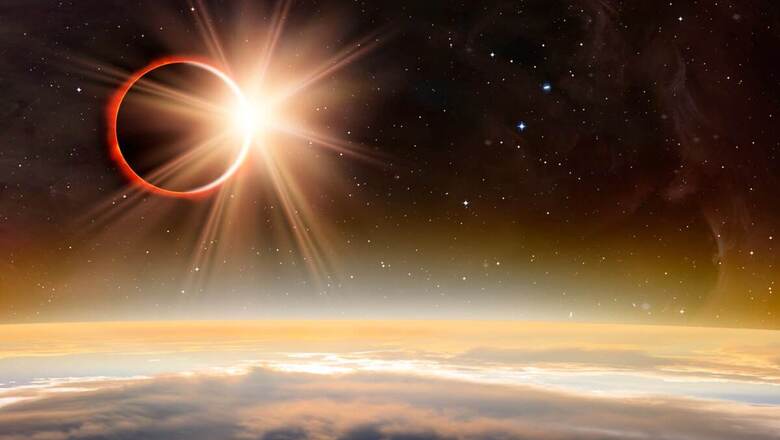
views
An annular solar eclipse is going to occur on Thursday but it will not be visible in India except in some parts of Arunachal Pradesh and Ladakh for a few minutes before the sunset, a prominent astrophysicist said. The annular solar eclipse occurs when the sun, moon and the earth come in a straight line and almost on the same plane. It is a partial eclipse when a ring of fire appears in the sky.
The path of the eclipse will not touch almost any part of India, barring the North-Eastern extremes of the country in Arunachal Pradesh and Ladakh, Director of M P Birla Planetarium, Debiprasad Duari, said in Kolkata on Tuesday. "In Arunachal Pradesh, people can see, just before the sunset, a minuscule fraction of the sun covered by the moon, that is also very low in the horizon, lasting at the most 3-4 minutes depending upon the position," Duari said.
"On the northern borders, in Ladakh, a sliver of land in the border region can experience the last phase of the partial eclipse, again for a short duration, but relatively at a higher altitude than the eastern part of the country," he said. One can see a very small part of the solar eclipse from the vicinity of Dibang Wildlife Sanctuary in Arunachal Pradesh at around 5:52 pm. In the northern part of Ladakh, where the sun will set at around 6.15 pm, the last phases of the phenomenon can be seen at around 6 pm.
The eclipse can be seen from a vast region of North America, Europe and Asia, Duari said. First, the partial eclipse will start at around 11:42 am Indian Standard Time and the annular eclipse will appear to occur from 3:30 pm and will continue up to 4:52 pm, though for different intervals for a particular region, depending upon one's geographical location.
The partial eclipse will end at around 6:41 pm IST, he said. Live coverage of the eclipse is being arranged by various organisations around the world.
.
Read all the Latest News, Breaking News and Coronavirus News here.




















Comments
0 comment